#house of mecklenburg
Explore tagged Tumblr posts
Text

Anna Elisabeth Auguste Alexandrine, Duchess of Mecklenburg-Schwerin was half sister to Grand Duchess Marie Pavlovna of Russia (Grand Duchess Vladimir), cousin to Victoria, Ella, Irene and Alix of Hesse, and aunt to princess Cecilie of Mecklenburg-Schwerin (future crown princess of Prussia). Anna died when she was 16.
"My grandfather’s second marriage was terminated by the early death of the Grand Duchess, formerly Princess Anna of Hessen-Darmstadt, when her first child, a daughter, was born. Her daughter too died at an early age, when she was only sixteen ; she was worshipped in our family almost like a young saint".
The memoirs of the Crown Princess Cecilie
"...there was one daughter, Anna, who married the Grand Duke of Mecklenburg-Schwerin as his second wife, and died in childbirth. They had only one little girl, Annchen, who died at 16. This was a very delicate and nervous child. We used to play with her when she paid her yearly visit to my grandparents but we were so much more robust than she and so wild that my grandmother used always to forbid us exciting her".
"Recollections: The Memoirs of Victoria Marchioness of Milford Haven".
23 notes
·
View notes
Text

“The House of Mecklenburg had some pretty good-looking ladies.” - Submitted by Anonymous
21 notes
·
View notes
Photo
Duchess Cecilie Auguste Marie of Mecklenburg-Schwerin (20 September 1886 – 6 May 1954) was the last German Crown Princess and Crown Princess of Prussia as the wife of Wilhelm, German Crown Prince, the son of Wilhelm II, German Emperor.
Cecilie was a daughter of Frederick Francis III, Grand Duke of Mecklenburg-Schwerin and Grand Duchess Anastasia Mikhailovna of Russia. She was brought up with simplicity, and her early life was peripatetic, spending summers in Mecklenburg and the rest of the year in Southern France. After the death of her father, she traveled every summer between 1898 and 1904 to her mother's native Russia. On 6 June 1905, she married German Crown Prince Wilhelm. The couple had four sons and two daughters. Cecilie, tall and statuesque, became popular in Germany for her sense of style. However, her husband was a womanizer and the marriage was unhappy.
After the fall of the German monarchy, at the end of World War I, Cecilie and her husband lived mostly apart. During the Weimar Republic and the Nazi period, Cecilie lived a private life mainly at Cecilienhof Palace in Potsdam. With the advance of the Soviet troops, she left the Cecilienhof in February 1945, never to return. She settled in Bad Kissingen until 1952 when she moved to an apartment in the Frauenkopf district of Stuttgart. In 1952, she published a book of memoirs. She died two years later.

Crown Princess Cecilie of Prussia, 1908 by Caspar Ritter (German-born Swiss, 1861–1923)
#history#art#clothing#german empire#kingdom of prussia#grand duchy of mecklenburg-schwerin#germany#mecklenburg-vorpommern#brandenburg#potsdam#cecilienhof#ww1#german revolution of 1918-1919#duchess cecilie of mecklenburg-schwerin#wilhelm german crown prince#wilhelm ii#frederick francis iii#grand duchess anastasia mikhailovna#caspar ritter#house of mecklenburg
481 notes
·
View notes
Text

Schwerin Castle, Mecklenburg-Vorpommern state, Germany,
Nicolas Cosedis Photography
#art#design#architecture#history#luxury lifestyle#style#luxury house#luxury home#castle#schloss#schloss schwerin#germany#mecklenburg vorpommern#aerial photography#nicolas cosedis#Landscaping
1K notes
·
View notes
Text
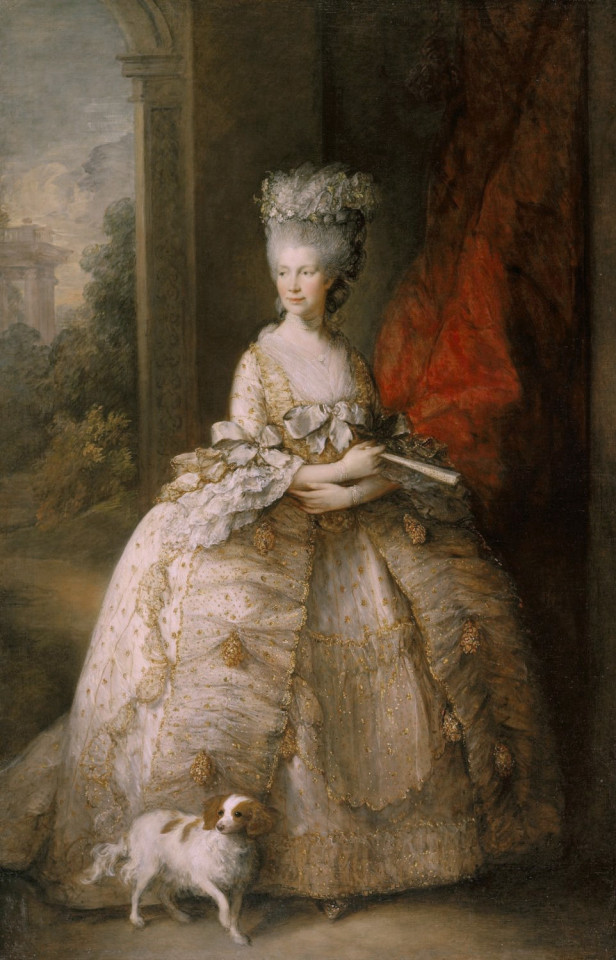
Queen Charlotte by Thomas Gainsborough, 1781.
#classic art#painting#thomas gainsborough#english artist#18th century#portrait#female portrait#outdoor portrait#queen charlotte#charlotte of mecklenburg-strelitz#queen#queen of great britain#house of hanover#white dress#fashion#dogs#dogs in portraits
140 notes
·
View notes
Text



Street photography, Germany (2) (3) by Valeska Engel
Via Flickr:
(1) (2) Blankenberg (3) Mainz
#around the neighborhood#roaming the streets#archway#houses#buildings#cobblestones#people#city life#germany#mecklenburg vorpommern#rhineland palatinate
11 notes
·
View notes
Text
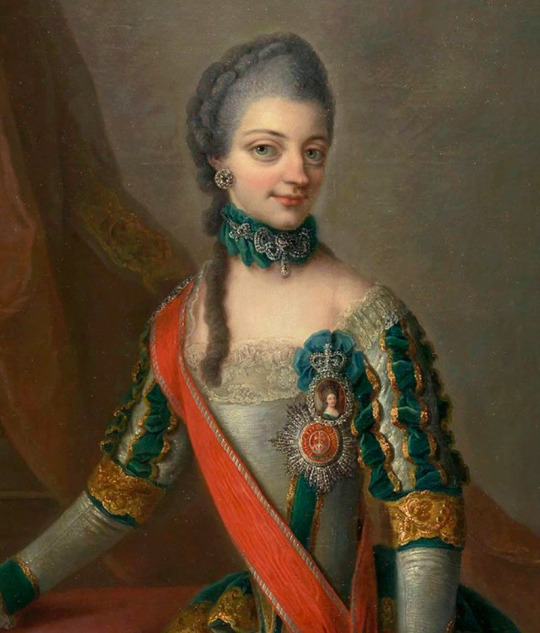
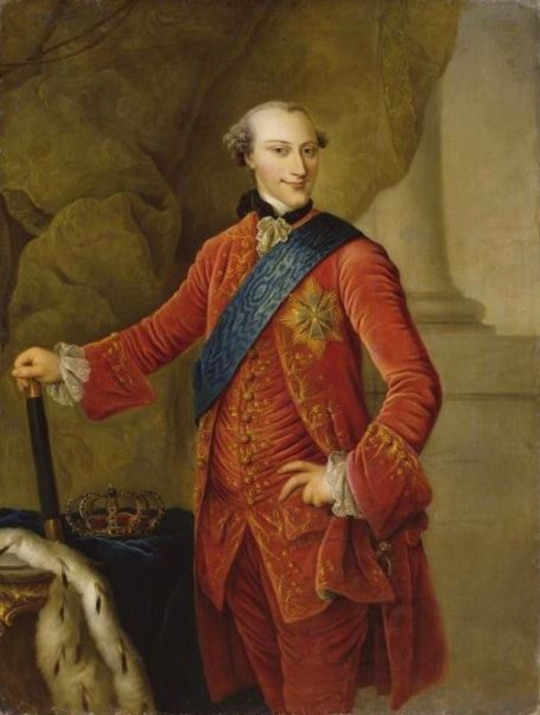

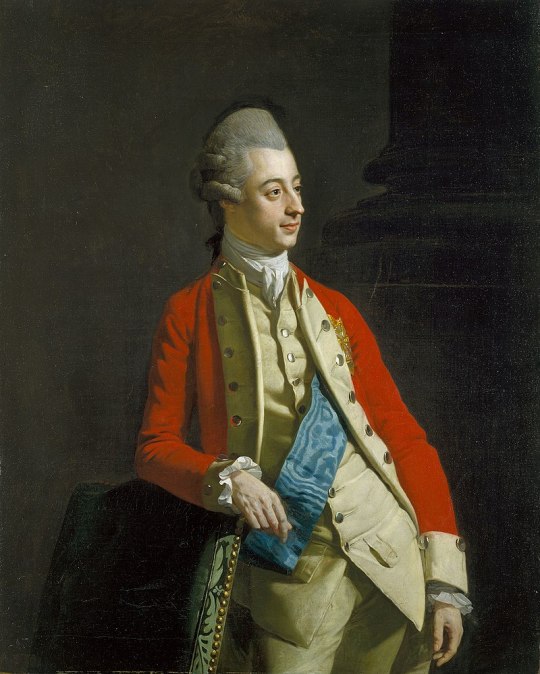

Queen Charlotte had 9 siblings all together, she was the 8th of 10 children born to her parents. Of those 10 children, 6 survived to adulthood.
First was Christiane, the eldest child. She never married and became a canoness later in life.
Next was Adolphus Frederick IV, who succeeded their uncle as Duke of Mecklenburg-Strelitz. He never married or had children, and was himself succeeded by his younger brother Charles.
Charles II was the next surviving child, and became Duke after his brother died childless. He would marry twice, with his descendants becoming part of the Royal Houses across Europe
Duke Ernest Gottlob was the seventh child, born two years before Charlotte. He was said to have fallen in love with the heiress Mary Bowes (An ancestor of the Queen mother) but no marriage took place. He became a military governor in Hanover, and would attempt to marry once more later in his life to settle his debts, but this came to nothing as well.
Duke George Augustus was Charlotte's only surviving younger sibling. He moved to Great Britain and served two years in the Royal Navy, also obtaining his doctorate in legal studies. He would later serve in the Austrian army under Maria Theresa, being promoted to the rank of Brigadier general. Like two of his brothers, he remained unmarried, and he passed away in his late 30s.
A daughter name Caroline was born between Christiane and Adolphus, but died the day of her birth.
After Adolphus, two more daughters were born. Elisabeth Christine who died a few days before her second birthday, and then Sophie Louise who died about 3 months before her second birthday.
Between Charlotte and George, another son named Gotthelf was born, but he only lived for two days.
#christiane of Mecklenburg-Strelitz#Adolphus Frederick IV#18th century#queen charlotte#Charles II#Duke Ernest Gottlob#Duke George Augustus#long live the queue#house of mecklenburg strelitz
33 notes
·
View notes
Text

Farm house in Mönchgut, Rügen Island, Mecklenburg-Vorpommern, Germany
German vintage postcard
#vorpommern#mönchgut#sepia#house#photography#rügen island#vintage#mecklenburg-vorpommern#postkaart#german#farm#ansichtskarte#ephemera#carte postale#postcard#postal#briefkaart#germany#rgen#photo#mecklenburg#mnchgut#island#tarjeta#historic#postkarte
11 notes
·
View notes
Text
So I read several books that I would otherwise have no access to, on Internet Archive, and I have several pulled up that I switch back and forth between until I finish them.
Anyway, one I am currently reading is about Queen Louise of Prussia… and I just wish people still wrote how they use to, for example, here is a passage describing her features:
“The Queen reminds me of Burke’s Star, that irradiated life, light, and joy. She verified such extravagant representations as one gets in childhood from the ‘Arabian Nights’ of a young, beautiful, and glorious queen. She is an angel in loveliness, gentleness, and grace. Tall and slender, she is not deficient in a suitable contour of form; she has light hair, her complexion is delicate and pure, the expression of her face of indescribable graciousness.” - Louise, Queen of Prussia. A memorial by August Kluckhohn published 1881.



The first picture is my favorite of her… she truly looks ethereal, like an apparition, so fairy like.
#Queen Louise of Prussia#Louise of Mecklenburg-Strelitz#house of hohenzollern#history#prussia#prussian royal family
3 notes
·
View notes
Text
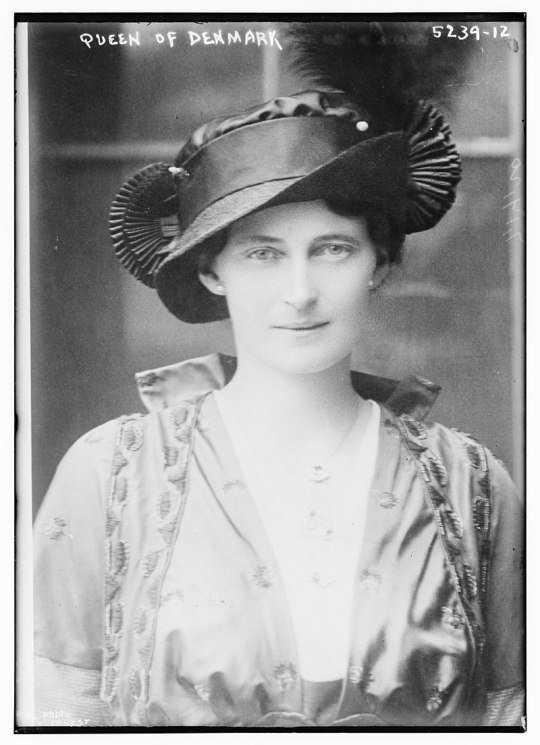
Alexandrine of Mecklenburg-Schwerin (24 December 1879 – 28 December 1952) was Queen of Denmark from 1912 to 1947, as well as Queen of Iceland from 1918 to 1944 as the spouse of King Christian X.
Alexandrine was a daughter of Frederick Francis III, Grand Duke of Mecklenburg-Schwerin and Grand Duchess Anastasia Mikhailovna of Russia. She was brought up with simplicity, and her early life was peripatetic, spending summers in Mecklenburg and the rest of the year in the south of France. She married Prince Christian of Denmark in 1898.
Alexandrine became crown princess in 1906 and queen consort of Denmark in 1912. She is not considered to have played any political role, but is described as being intelligent and a loyal support to her spouse. In spite of her German background, she was loyal to her new country and stood by her husband during the German occupation of Denmark during World War II.
#Alexandrine of Mecklenburg-Schwerin#House Mecklenburg-Schwerin#women in history#photo#photography#black and white
0 notes
Text

Man Discovers 900-Year-Old Stone Carving Beneath His House in Germany
The rare picture stone may depict Otto of Bamberg, the bishop who helped spread Christianity throughout the region.
During a recent home renovation in Klotzow, Germany, a man stumbled upon something unexpected: a three-foot-long bildstein, or picture stone, dating to the 12th century.
The boulder features a carved figure draped in robes with a cross in front of his body. Experts think it may represent Otto of Bamberg, the bishop and missionary credited with spreading Christianity to the region. It’s also the only known picture stone to depict a figure with a cross.
Klotzow is a village located in Mecklenburg-Vorpommern, a state in northern Germany. According to a statement from the state’s culture ministry, a resident named Peter Wittenberg discovered the stone while working on his home’s foundations. The large artifact was buried just a few centimeters below the surface.
Wittenberg, who knew he had found something special, reported his discovery to officials. Experts moved it to the city of Schwerin, where researchers could conduct a careful examination.
“The significance of this find cannot be overestimated,” says Detlef Jantzen, Mecklenburg-Vorpommern’s chief archaeologist, in the statement. “The new find from Klotzow is the only one that could depict a Christian dignitary. Now, we are going to try to learn more about the stone’s original location.”

Carved picture stones first appeared in the 4th century and were produced through the 12th century. They featured a rich variety of artistic styles, and many of them served as memorials to individuals who had died. According to the culture ministry, picture stones that reveal evidence of Christianization are especially rare.
Born in 1060, Otto of Bamberg dedicated his life to converting populations in an area known as Pomerania, located in parts of present-day Germany and Poland. According to some accounts, the number of people he baptized may be in the tens of thousands.
“With this exceptionally significant find, we can add another important piece to the mosaic of our country’s history,” says Bettina Martin, Mecklenburg-Vorpommern’s culture minister, in the statement. “Bishop Otto of Bamberg undertook his first missionary journey to Pomerania in 1124. The fact that a picture stone from this period has now been found exactly 900 years later is an extremely fortunate circumstance.”
There are only around 20 known picture stones in the region today, as Jantzen tells Live Science’s Laura Geggel. He thinks the figure’s shawl and cross could be a pallium, a religious cloth worn by the pope, archbishops and some bishops.
“Otto received the pallium from Pope Paschalis II,” Jantzen adds. “When Otto was traveling in Pomerania in 1124 and 1128, he was the first and only possible bearer of a pallium at that time in that area.”
Specialists in Schwerin are currently examining and documenting the stone artifact. When they’re done, officials hope to display it in Klotzow, where it was found.
“The finder deserves thanks and the highest recognition for reporting his discovery immediately,” says Martin in the statement. “The experts from the State Office for Culture and Monument Preservation and the local monument protection authority will now take care of securing and further examining this one-of-a-kind find.”
By Julia Binswanger.

#Man Discovers 900-Year-Old Stone Carving Beneath His House in Germany#Bishop Otto of Bamberg#Klotzow Germany#picture stone#ancient artifacts#archeology#archeolgst#history#history news#ancient history#ancient culture#ancient civilizations
238 notes
·
View notes
Text
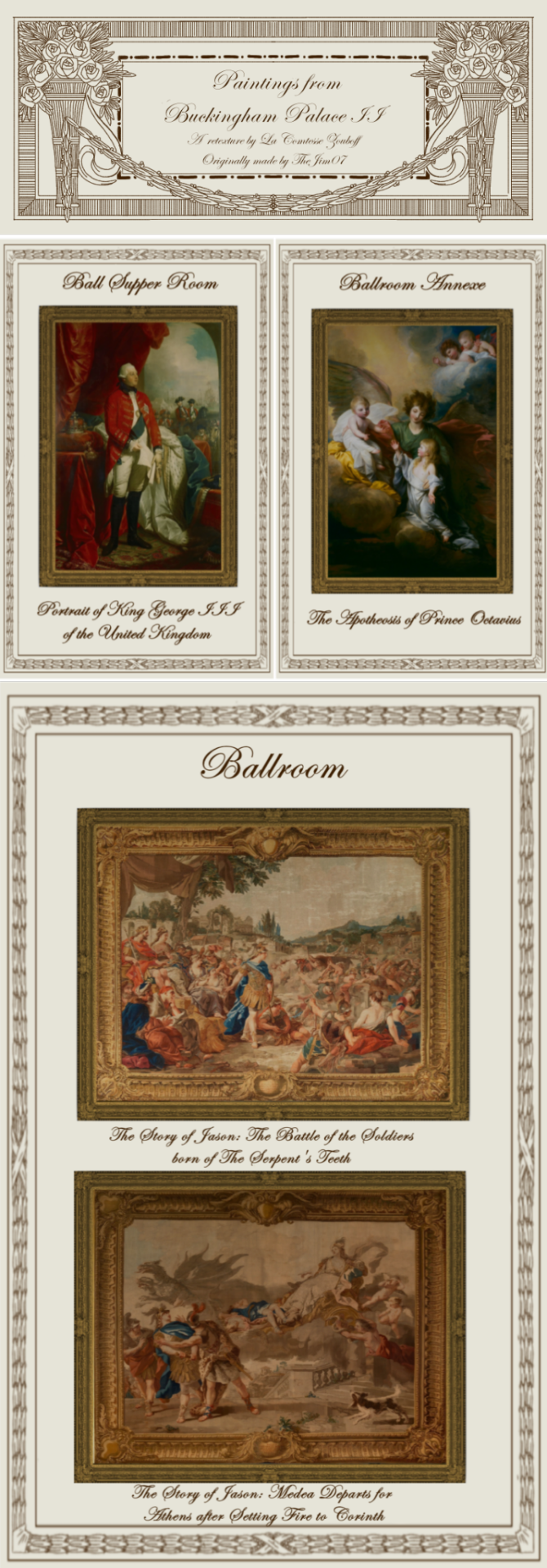
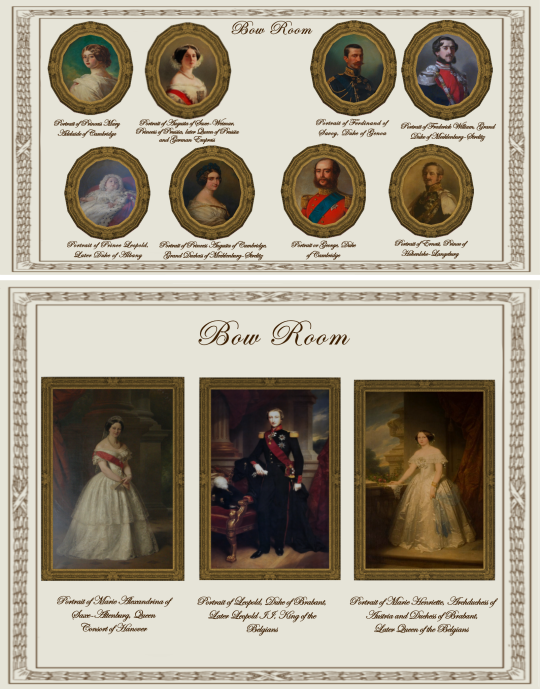
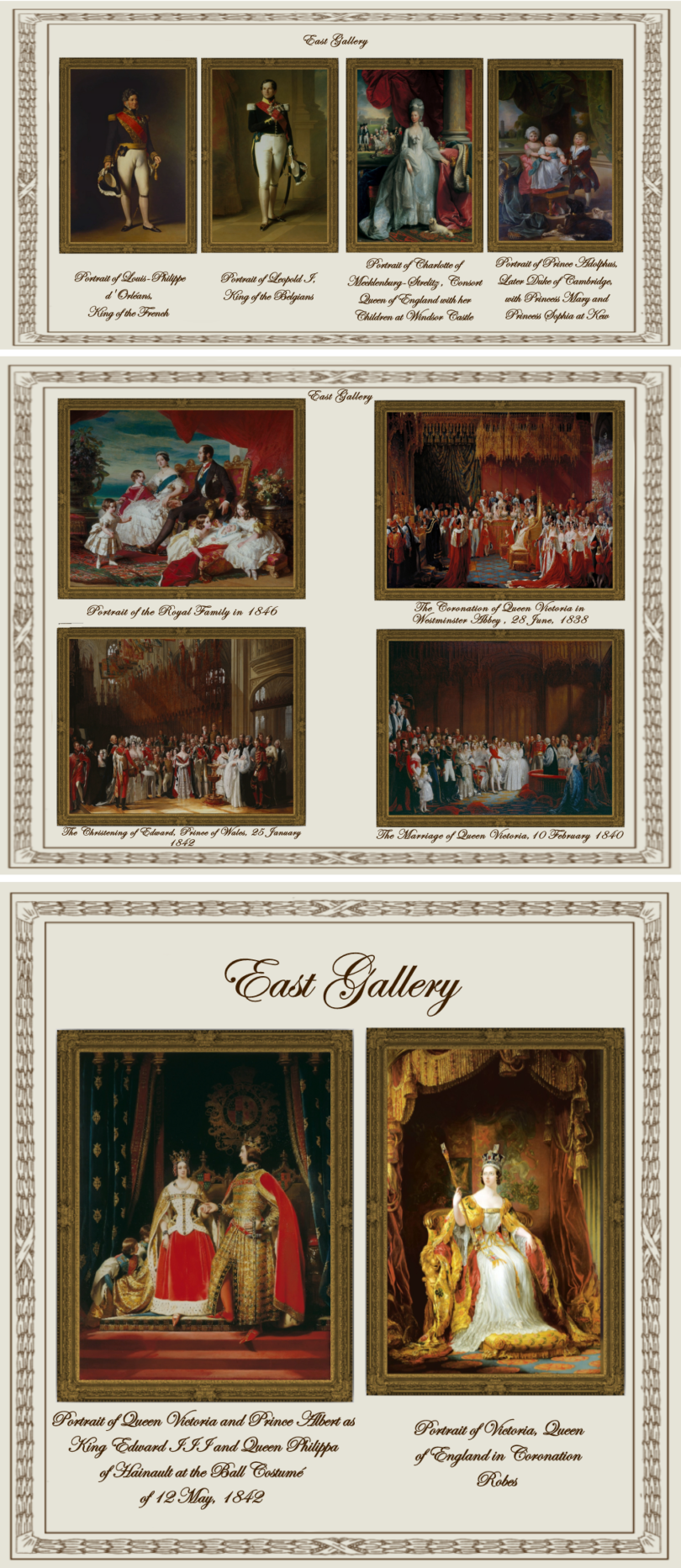
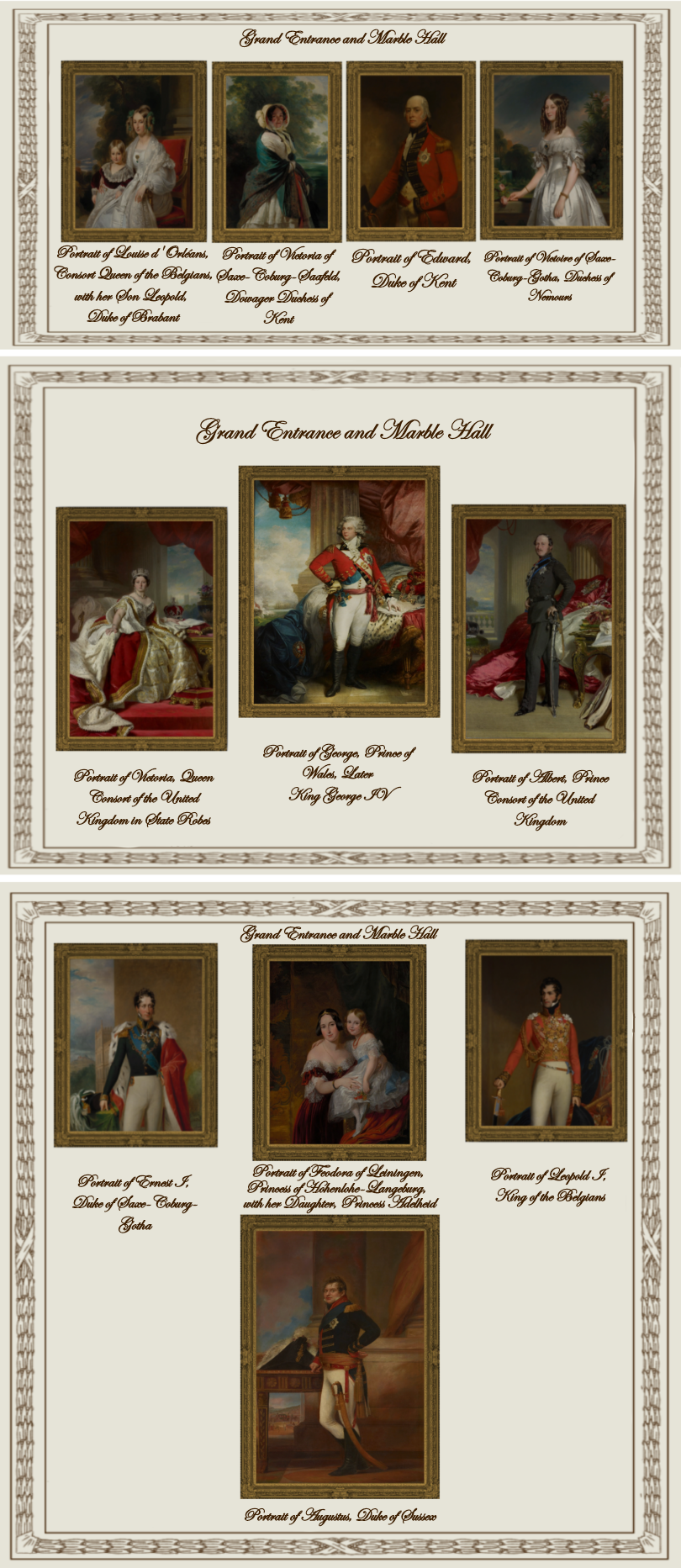

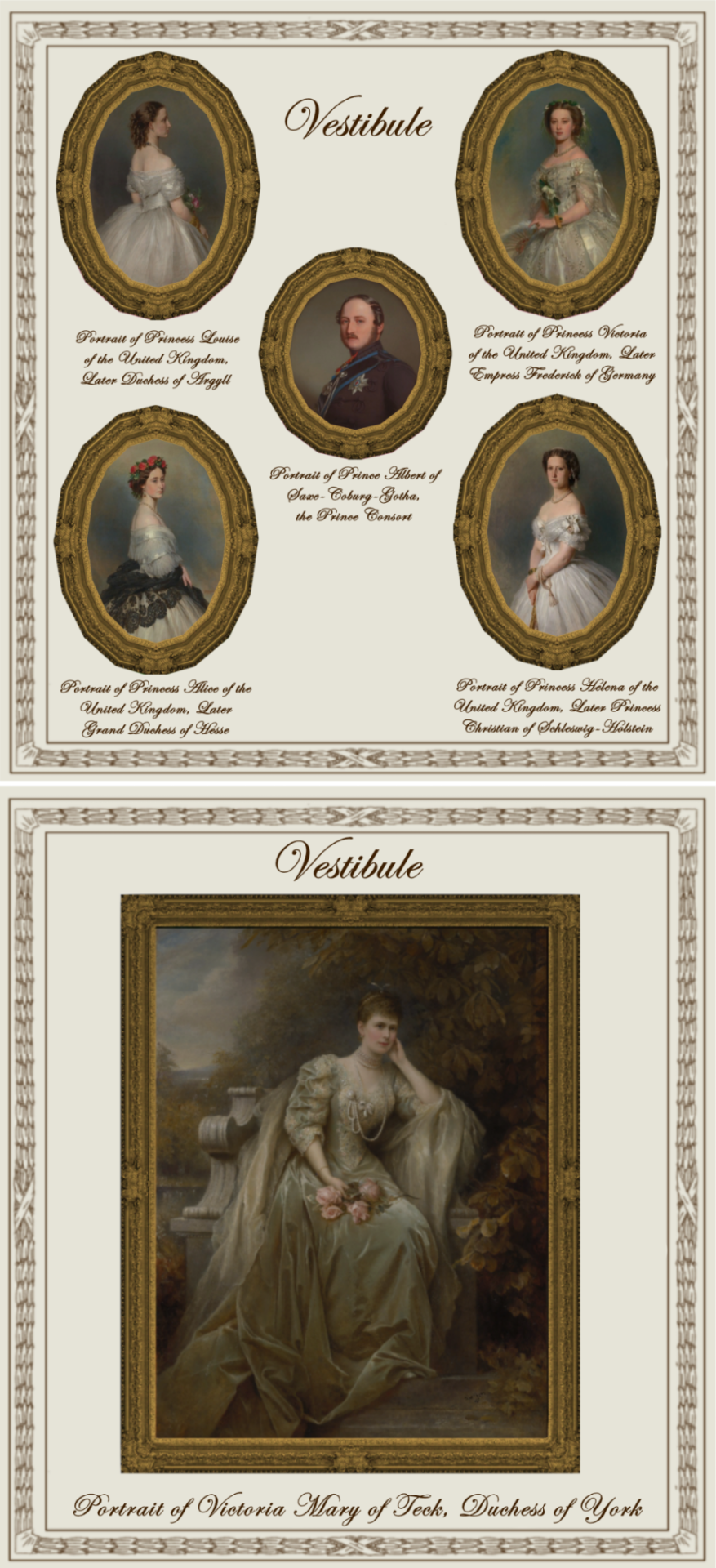
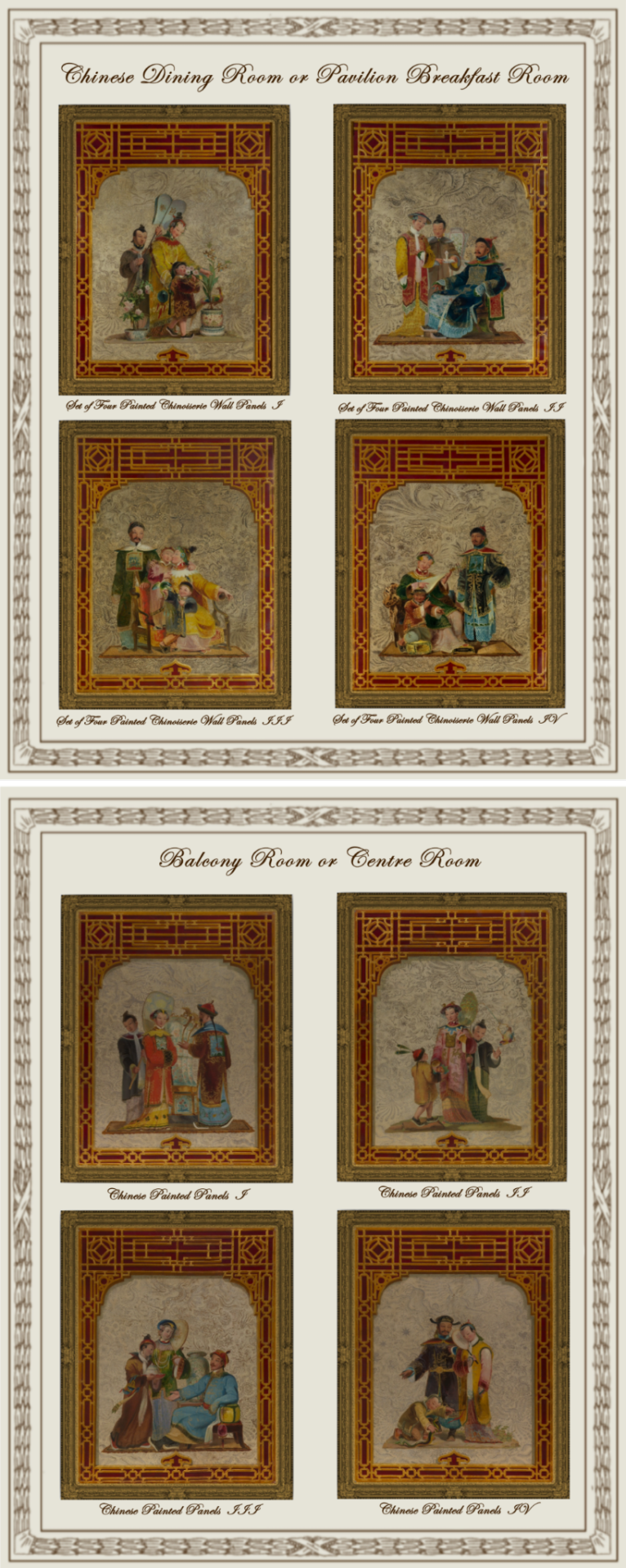

Paintings from Buckingham Palace: part II
A retexture by La Comtesse Zouboff — Original Mesh by @thejim07
Spread among 13 occupied and historic royal residences in the United Kingdom, the collection is owned by King Charles III and overseen by the Royal Collection Trust. The British monarch owns some of the collection in right of the Crown and some as a private individual. It is made up of over one million objects, including 7,000 paintings, over 150,000 works on paper, this including 30,000 watercolours and drawings, and about 450,000 photographs, as well as around 700,000 works of art, including tapestries, furniture, ceramics, textiles, carriages, weapons, armour, jewellery, clocks, musical instruments, tableware, plants, manuscripts, books, and sculptures.
Some of the buildings which house the collection, such as Hampton Court Palace, are open to the public and not lived in by the Royal Family, whilst others, such as Windsor Castle, Kensington Palace and the most remarkable of them, Buckingham Palace are both residences and open to the public.
About 3,000 objects are on loan to museums throughout the world, and many others are lent on a temporary basis to exhibitions.
-------------------------------------------------------
The second part includes paintings displayed in the Ball Supper Room, the Ballroom, the Ballroom Annexe, the Bow Room, the East Gallery, the Grand Entrance and Marble Hall, the Minister's Landing & Staircase, the Vestibule, the Chinese Dining Room and the Balcony Room.
This set contains 57 paintings and tapestries with the original frame swatches, fully recolourable. They are:
Ball Supper Room (BSR):
Portrait of King George III of the United Kingdom (Benjamin West)
Ballroom (BR):
The Story of Jason: The Battle of the Soldiers born of The Serpent's Teeth (the Gobelins)
The Story of Jason: Medea Departs for Athens after Setting Fire to Corinth (the Gobelins)
Ballroom Annexe (BAX):
The Apotheosis of Prince Octavius (Benjamin West)
Bow Room (BWR):
Portrait of Princess Mary Adelaide of Cambridge (William Corden the Younger)
Portrait of Princess Augusta of Cambridge, Grand Duchess of Mecklenburg-Strelitz (Alexander Melville)
Portrait or George, Duke of Cambridge (William Corden the Younger)
Portrait of Frederick William, Grand Duke of Mecklenburg-Strelitz (Franz Xaver Winterhalter)
Portrait of Augusta of Saxe-Weimar, Princess of Prussia, later Queen of Prussia and German Empress (Franz Xaver Winterhalter)
Portrait of Prince Leopold, Later Duke of Albany (Franz Xaver Winterhalter)
Portrait of Ernest, Prince of Hohenlohe-Langeburg (Franz Xaver Winterhalter)
Portrait of Ferdinand of Savoy, Duke of Genoa (Eliseo Sala)
Portrait of Marie Alexandrina of Saxe-Altenburg, Queen Consort of Hanover (Carl Ferdinand Sohn)
Portrait of Leopold, Duke of Brabant, Later Leopold II, King of the Belgians (Nicaise de Keyser)
Portrait of Marie Henriette, Archduchess of Austria and Duchess of Brabant, Later Queen of the Belgians (Nicaise de Keyser)
East Gallery (EG):
Portrait of Leopold I, King of the Belgians (Franz Xaver Winterhalter)
Portrait of Victoria, Queen of England in Coronation Robes (Sir George Hayter)
Portrait of Louis-Philippe d'Orléans, King of the French (Franz Xaver Winterhalter)
Portrait of Charlotte of Mecklenburg-Strelitz, Consort Queen of England with her Children at Windsor Castle (Benjamin West)
Portrait of Prince Adolphus, later Duke of Cambridge, With Princess Mary and Princess Sophia at Kew (Benjamin West)
The Coronation of Queen Victoria in Westminster Abbey, 28 June, 1838. (Sir George Hayter)
The Christening of Edward, Prince of Wales 25 January, 1842 (Sir George Hayter)
The Marriage of Queen Victoria, 10 February, 1840 (Sir George Hayter)
Portrait of the Royal Family in 1846 (Franz Xaver Winterhalter)
Portrait of Queen Victoria and Prince Albert as King Edward III and Queen Philippa of Hainault at the Ball Costumé of 12 May, 1842 (Sir Edwin Landseer)
Grand Entrance and Marble Hall (GEMH):
Portrait of Edward, Duke of Kent (John Hoppner)
Portrait of Ernest I, Duke of Saxe-Coburg-Gotha (George Dawe)
Portrait of Victoria of Saxe-Coburg-Saafeld, Dowager Duchess of Kent (Franz Xaver Winterhalter)
Portrait of Albert, Prince Consort of the United Kingdom (Franz Xaver Winterhalter)
Portrait of Victoria, Queen Consort of the United Kingdom in State Robes (Franz Xaver Winterhalter)
Portrait of Louise d'Orléans, Consort Queen of the Belgians, with her Son Leopold, Duke of Brabant (Franz Xaver Winterhalter)
Portrait of Feodora of Leiningen, Princess of Hohenlohe-Langeburg, with her Daughter, Princess Adelheid (Sir George Hayter)
Portrait of George, Prince of Wales, Later King George IV (Mather Byles Brown)
Portrait of Victoire of Saxe-Coburg-Gotha, Duchess of Nemours (Franz Xaver Winterhalter)
Portrait of Augustus, Duke of Sussex (Domenico Pellegrini)
Portrait of Leopold I, King of the Belgians (William Corden the Younger)
Minister's Landing and Staircase (MLS):
Portrait of George, Prince of Wales in Garther Robes (John Hoppner)
The Loves of the Gods: The Rape of Europa (the Gobelins)
The Loves of the Gods: The Rape of Proserpine (The Gobelins)
Vestibule (VL):
Portrait of Prince Albert of Saxe-Coburg-Gotha, the Prince Consort (Unknown Artist from the German School)
Portrait of Princess Alice of the United Kingdom, Later Grand Duchess of Hesse (Franz Xaver Winterhalter)
Portrait of Princess Helena of the United Kingdom, Later Princess Christian of Schleswig-Holstein (Franz Xaver Winterhalter)
Portrait of Princess Louise of the United Kingdom, Later Duchess of Argyll (Franz Xaver Winterhalter)
Portrait of Princess Victoria of the United Kingdom, Later Empress Frederick of Germany (Franz Xaver Winterhalter)
Portrait of Victoria Mary of Teck, Duchess of York (Edward Hughes)
Chinese Dining Room or Pavilion Breakfast Room(CDR):
Set of Four Painted Chinoiserie Wall panels I (Robert Jones)
Set of Four Painted Chinoiserie Wall panels II (Robert Jones)
Set of Four Painted Chinoiserie Wall panels III (Robert Jones)
Set of Four Painted Chinoiserie Wall panels IV (Robert Jones)
Balcony Room or Centre Room (BR):
Chinoiserie Painted Panel I (Robert Jones)
Chinoiserie Painted Panel II (Robert Jones)
Chinoiserie Painted Panel III (Robert Jones)
Chinoiserie Painted Panel IV (Robert Jones)
EXTRAS! (E):
I decided to add the rest of the tapestries from the story of Jason (wich hangs in the Grand Reception Room at Windsor Castle) and (with Jim's permission) added the original mesh for paintings number 2,3,4 & 5 from the Vestibule (seen here and here) wich was never published. These items are:
The Story of Jason: Jason Pledges his Faith to Medea (the Gobelins)
The Story of Jason: Jason Marries Glauce, Daughter of Creon, King of Thebes (the Gobelins)
The Story of Jason: The Capture of the Golden Fleece (the Gobelins)
The Story of Jason: The Poisoning of Glauce and Creon by Medea's Magic Robe (the Gobelins)
Sea Melodies (Herbert James Draper) (made by TheJim07)
-------------------------------------------------------
Found under decor > paintings for:
500§ (BWR: 1,2,3,4,5,6, & 8 |VL: 1)
570§ (VL: 2,3,4 & 5 |E: 5)
1850§ (GEMH: 1 & 3)
2090§ (GEMH: 2,6,7, 9 & 11)
3560§ (GEMH: 4,5 & 10 |BSR: 1 |EG: 1,2,3,4 & 5 |MLS: 1 |BAX: 1)
3900§ (CDR: 1,2,3 & 4 |BR: 1,2,3 & 4 |EG: 10 |VL: 6 |GEMH: 8)
4470§ (MLS: 2 |E: 1)
6520§ (BR 1 & 2| MLS: 3 |EG: 6,7,8 & 9 |BR: 1 & 2 |E: 2,3 & 4)
Retextured from:
"Saint Mary Magdalene" (BWR: 1,2,3,4,5,6, & 8 |VL: 1) found here.
"Sea Melodies" (VL: 2,3,4 & 5 |E: 5)
"The virgin of the Rosary" (GEMH: 1 & 3) found here.
"Length Portrait of Mrs.D" (GEMH: 4,5 & 10 |BSR: 1 |EG: 1,2,3,4 & 5 |MLS: 1 |BAX: 1) found here
"Portrait of Maria Theresa of Austria and her Son, le Grand Dauphin" (CDR: 1,2,3 & 4 |BR: 1,2,3 & 4 |EG: 10 |VL: 6 |GEMH: 8) found here
"Sacrifice to Jupiter" (MLS: 2 |E: 1) found here
"Vulcan's Forge" (BR 1 & 2| MLS: 3 |EG: 6,7,8 & 9 |BR: 1 & 2 |E: 2,3 & 4) found here
(you can just search for "Buckingham Palace" using the catalog search mod to find the entire set much easier!)
Disclaimer!
Some paintings in the previews look blurry but in the game they're very high definition, it's just because I had to add multiple preview pictures in one picture to be able to upload them all! Also sizes shown in previews are not accurate to the objects' actual sizes in most cases.

Drive
(Sims3pack | Package)
(Useful tags below)
@joojconverts @ts3history @ts3historicalccfinds @deniisu-sims @katsujiiccfinds @gifappels-stuff
-------------------------------------------------------
#the sims 3#ts3#sims 3#s3cc#sims 3 cc#sims 3 download#sims 3 decor#edwardian#victorian#regency#georgian#buckingham#buckingham palace#wall decor#sims 3 free cc#large pack#this was exhausting
87 notes
·
View notes
Note
What is the relationship between Till and his sister?
Little is known about their relationship, Till's family is a sanctuary for him, so he is very private on the subject. However, we have some answers. We know that Saskia was very present last year with Till, to support him. On each tour Till welcomes his family for one or more shows. Till has also mentioned his sister in a few interviews, notably by saying that they share a house in Mecklenburg and that she has many cats (interview from 2013). According to Gitta, Till has formed a clan around him, a united clan, they all seem very close.
Werner's book also tells us a lot about the relationship between Till and Saskia when they were young. There is a 6-year age difference between them, and Till was sent to swimming school at the age of 11 while Saskia lived with her mother. So they probably didn't see much of each other during those years, but Till talks nostalgically about the time when he lived in Rostock in a tiny flat that he shared with his mother and sister. Werner tells a lovely anecdote in his book: one winter he saw his two children playing, rolling and fighting in the snow. Till, in the interview he gave for the republication of his father's book, said that Saskia was there when he had the fight with his father and that his father had thrown his things out, and that she was upset. That seems to have made an impression on Till. We know that they stayed in touch after Till left, they exchanged many letters and we also know that Saskia asked her father for money which she secretly gave to Till. Werner, having understood this, acted as if he didn't know.
22 notes
·
View notes
Text

Queen Charlotte by Johann Zoffany, 1771.
#classic art#painting#johann zoffany#german artist#18th century#portrait#female portrait#indoor portrait#queen charlotte#charlotte of mecklenburg strelitz#queen#queen of great britain#house of hanover#fashion#blue dress#chair#flowers
42 notes
·
View notes
Text





Schwerin, Germany (2) (3) (4) (5) by Daniel Primi
#buildings#roaming the streets#houses#germany#mecklenburg#mecklenburg vorpommern#mecklenburg western pomerania
1 note
·
View note
Text

Elisabeth Albertine of Saxe-Hildburghausen, Duchess of Mecklenburg-Strelitz. As the mother of Queen Charlotte, she is the ancestor of multiple reigning monarchs in Europe today; those in The United Kingdom, Denmark, Norway, and Spain. She is also the ancestor of the abolished monarchies of Greece and Yugoslavia.
#Elisabeth Albertine of Saxe-Hildburghausen#18th century#18th century art#Duchess of Mecklenburg-Strelitz#house of Saxe-Hildburghausen#long live the queue
14 notes
·
View notes